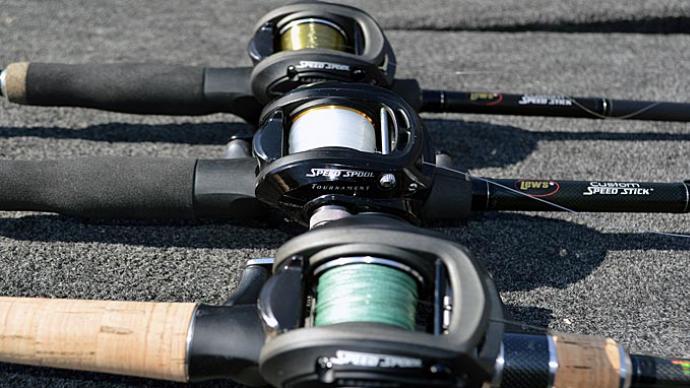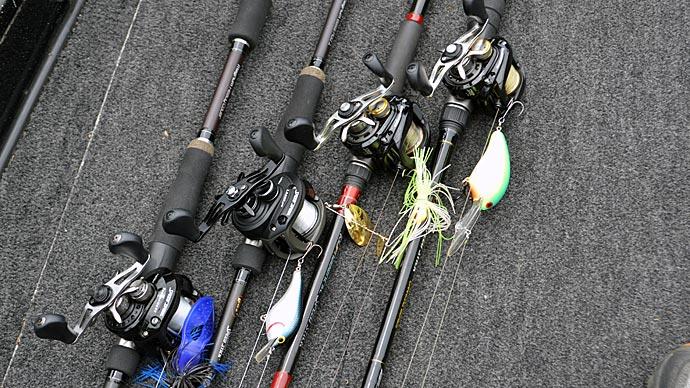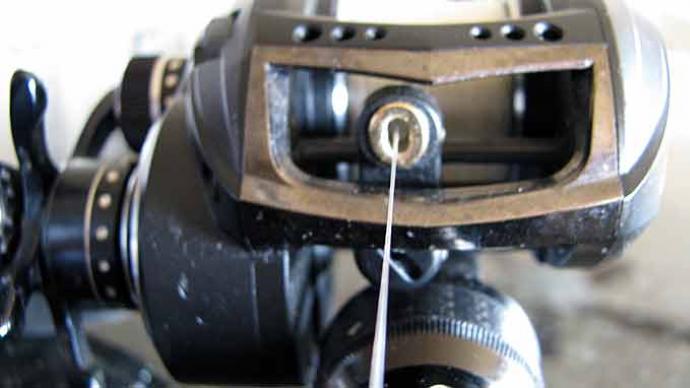
Choosing a fishing line can be an interesting challenge for even the most seasoned bass fisherman. If you wait a few weeks, there is either a new product from a company that isn't known for its manufacturing line or a new line offered by one of the larger companies. Likewise, there aren't some of the products on the market that were billed as the greatest thing since sliced bread just a few years ago. In some cases, like the braided products, the marketplace now has only a few options. This is partly because many of the products available during the "super-line craze" consisted of a company buying fiber and producing a braided product. Some of the major line companies took a different approach to their products. Through extensive testing, they built on some of the better features of the braided lines with offerings available today. Others decided that their market share with their product wasn't where they needed to be in the short term and dropped the braided or their super-line product.
You need to look no further than their websites to give you an idea of the complexity of the offerings from just two major line companies. However, you may want to look there because most tackle outlets aren't going to carry but a few of the products they offer. The folks at Stren have at least eight lines. The folks at Berkley have about twelve products, but that is only part of the story. The conglomerate of brand names marketed by Pure Fishing includes Berkley and other major players such as Spider Wire, which includes some three braided, three fusion, and three monofilament products.
I could add a disclaimer because I don't have an affiliation with either of these companies. However, I did want to get their company position on some general questions that spokesmen for either company could answer. Others were particular since they related to products from only one of the companies. The person who provided me with input from Berkley was Mr. Brian Thomas, the Corporate Communication Director. The contact at Stren was Product Manager Mr. David Justice.
To start with, I couldn't figure out from the Berkley website which line you would consider the "all-around performer. "I have more than a passing knowledge about lines and could only figure out the specialty lines in their offerings. So when I say the best all-around line, I am referring to one with good "castability," tensile strength, knot strength, abrasion resistance, controlled stretch (shock resistance), and the smallest possible diameter without the exclusion of the aforementioned properties.
If you look at the Stren product, the original Stren line of thirty-plus years ago was billed as providing the best compromise for the attainable features of each of these desired traits. Not surprisingly, the original Stren is still the best seller for their company. So it ended up that Berkley considers the Sensation product as their best all-around product. The reasoning is that, for example, the Sensation is superior to their XT in knot strength, has a smaller diameter, and has good tensile strength among its attributes.
What does it mean to you if you look at a line and see the word "strength"? If it means tensile strength, it speaks to the pound tolerance per unit of measurement in a straight pull. Unfortunately, that has nothing to do with how well the strength can hold up in a torque condition, such as when you tie a knot. Nor does it tell you anything about how well the line will withstand the wear and tear of rubbing against rough objects. The ability of a line to withstand abrasion can be improved in one of several ways. The first is to make the line thicker (per a given pound test) so that it simply doesn't lose as much strength by having the surface damaged. The second way is to enhance the surface with a chemical coating, which makes the surface tougher and sometimes slicker, which means the line may tend to slip in the knot. Unfortunately, when you change the chemistry of a monofilament line to get better characteristics in one feature, you will usually compromise another feature-thus, the specialty lines.
Berkley has a very complex aquatic research center. Thus they were an excellent source to get input on the effect of line visibility on feeding patterns of bass since they make one of the most invisible (the fluorocarbon product - Vanish) and the brightest of the fluorescent line in their green high visibility product. The result is what you may expect in good visibility, bright daylight, and clear water. The clearer or more neutral a line, the less it appears to be an issue in the environment of the bass. The real question was whether the fluorocarbon line was proven superior in "detectability" by bass than clear or low visibility green.
Mr. Thomas gave me the results of an interesting test. Lines of various types and colors were suspended in the large tank with the bass. The facilities were set up so that the researchers could detect the contact when a fish swam into a line. The experiment included variability where the facility went through a clock which included light conditions similar to a natural 24-hour cycle-including night, dusk, dawn, and mid-day. The fish did not make an appreciable distinction between the types of the line during the night and to somewhat limited levels of distinction in low light conditions but were appreciably more likely during bright conditions to swim into the fluorocarbon (thus not "seeing it"), than the other types and colors of line. Thus the data suggest that the stuff is highly invisible to bass in water.
Since fluorocarbon is primarily about being invisible in water, it should be noted that both Berkley and Stren sell many highly visible fluorescent products. In Stren's case, over eighty percent of the original Stren formula is sold as blue fluorescent. In addition, a lot of folks like to see their line. There are several arguments as to where the high-visibility line has an advantage. First, the line you see is the line you control. Thus, when you are flipping or casting in tight places, you can control the cast by using the line's visibility to assist in a better presentation of the lure. Also, when fishing soft plastics such as worms, lizards, finesse baits, or even jig and pigs, you can often see the strike as the bass picks up the bait long before you can feel the hit. Often this is the difference between hooking the fish or having him release the bait just as you finally feel the hit.
Line diameter is also essential in choosing the proper line for your fishing. This was one of the outstanding features of the braided and super lines. A thinner line allows you to put more on a reel per pound test, have a better feel of the plug on retrieve, a better feel of strikes, and much less wind resistance from the line when you cast the plug. Another advantage of a thin diameter is that you also have less resistance in the water; thus, a crankbait will tend to dive deeper on retrieve than with a thicker line.
Another factor in most of our lines from which we have to choose is that they will break at an appreciably higher pound test than that for which they are rated. This is a game that, as best I can tell, started when some lines from abroad came in and were appreciably stronger than the pound-test rating on the spool. The domestic line companies weren't going to be had, so they have done the same thing. So if you fish in saltwater or in some unique condition when you care about accurate ratings, you will need to get an International Game Fish Association rated line, which has to break within a certain tolerance of the rating, or fish caught can't qualify for records.
I was surprised that strong demand for super lines exists. The Pure Fishing folks (Berkley and Spider Wire) have a couple of super lines. The Spider Wire is a braided product, while their FireLine is a so-called thermal filament fishing line. According to Mr. Thomas, FireLine has greater knot strength when compared to a comparable pound test of Spider Wire. He also answered a common rumor during the early stage of the super line era that these lines don't damage the guides that come on quality rods.
So if you want a specialty line, there are plenty to choose from, but make sure you aren't gaining one feature and sacrificing another that is equally important in assuring your fishing success. For example, when you read "Superior Strength," does it mean knot, abrasion, or tensile? If you can figure out a way to take advantage of tensile strength by straight pull (end to end) without having to tie a knot or avoid hitting cover or other rough underwater features, you can only worry about one feature.
One good factor about premium lines from major companies is that you can get a proven product such as the original Stren or XT from Berkley or wait a few months, and the application of new technology will result in the creation of new products from which you can choose.




